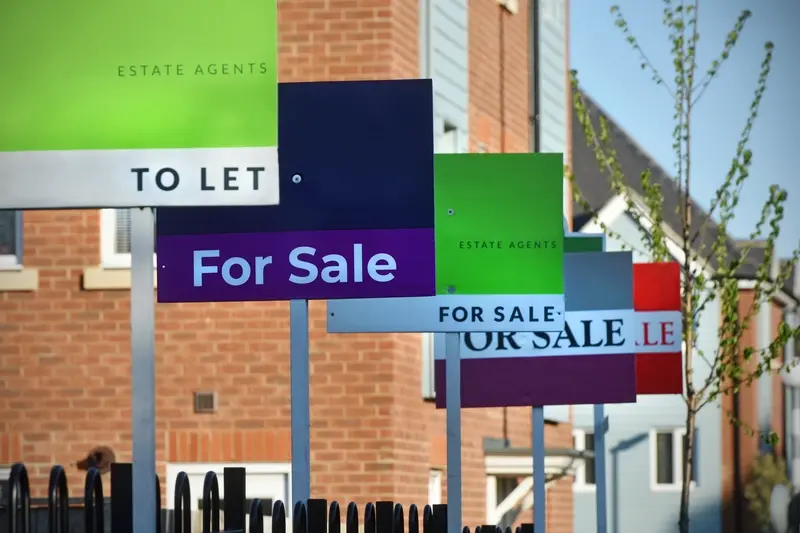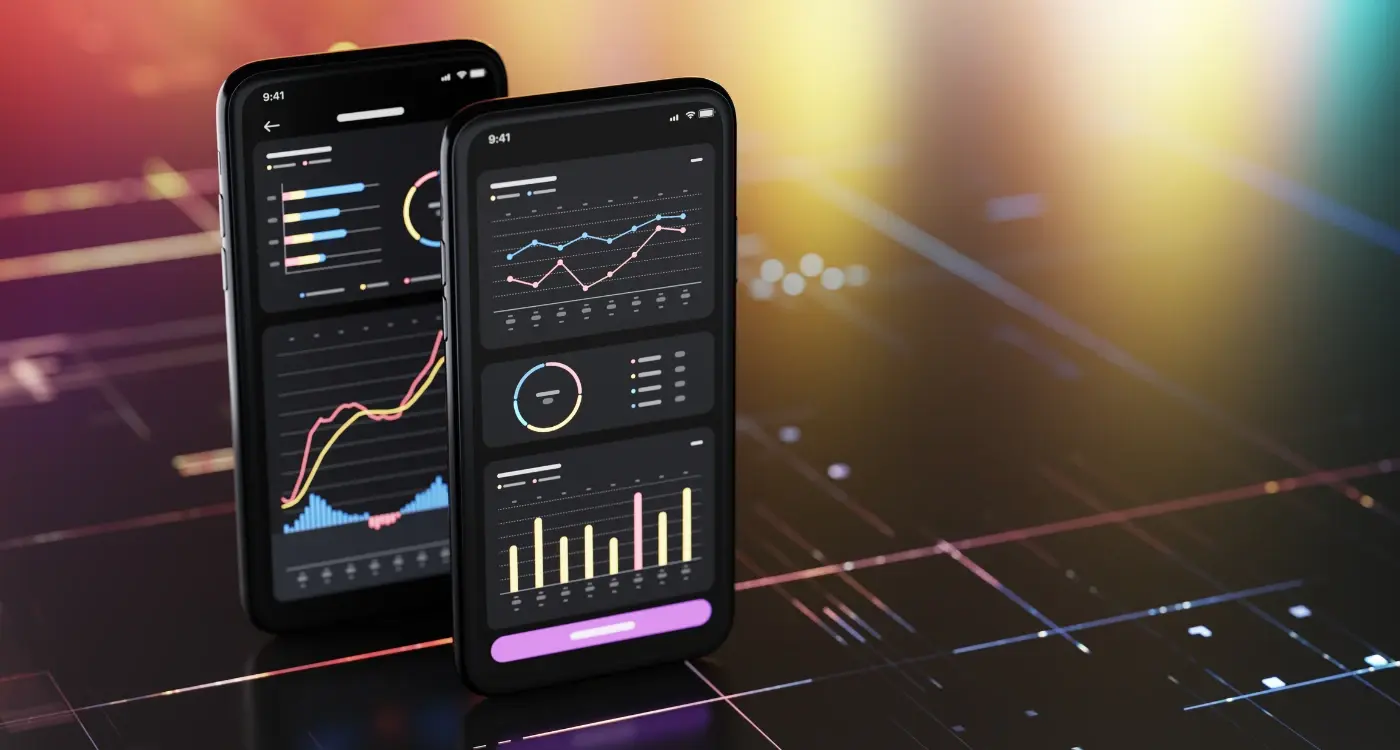Should My Real Estate App Include Virtual Tours And How Much Do They Cost?
Nearly 90% of property buyers now browse homes online before booking a viewing—and most of them expect to see more than just static photos. Virtual tours have become the new standard for property viewing, changing how people buy and sell homes. When I'm working with estate agents and property developers on their apps, the question always comes up: should we include virtual tours, and what's it going to cost us?
The answer isn't as straightforward as you might think. Virtual tours can range from simple 360-degree photo galleries that cost a few thousand pounds to develop, right up to fully interactive 3D experiences that might set you back tens of thousands. The technology has come a long way from those clunky, slow-loading tours we used to see on property websites.
The estate agents who invest in proper virtual tour technology are seeing 40% more enquiries than those who stick with basic photo galleries
What makes this decision tricky is that there are so many different types of virtual tours you can build into your app. Some use basic panoramic photos, others create detailed 3D models, and the most advanced ones let users walk through properties as if they were playing a video game. Each approach has different costs and benefits—and choosing the wrong one can be an expensive mistake.
What Are Virtual Tours In Real Estate Apps
Virtual tours in real estate apps are digital experiences that let people explore properties without physically being there. Think of them as interactive walkthroughs that you can control from your phone or tablet—you can move from room to room, look around in all directions, and get a proper feel for the space.
These tours work by using special cameras or smartphone technology to capture a property in detail. The most basic version might be a series of connected photos that you can click through, whilst more advanced versions use 360-degree cameras to create immersive experiences where you can look up at the ceiling, down at the floors, and spin around to see everything.
How Users Experience Virtual Tours
When someone opens a virtual tour in your app, they're typically dropped into the property's entrance or main room. From there, they can:
- Tap or drag to look around the space
- Click on arrows or hotspots to move between rooms
- Zoom in to examine details like fixtures or finishes
- Access additional information about specific features
- Take measurements (in more advanced versions)
The technology behind virtual tours has come a long way—what used to require expensive professional equipment can now be created with standard smartphones and clever software. This has made virtual tours much more accessible for estate agents and property developers who want to showcase their listings in a more engaging way than traditional photos.
Why Property Buyers Love Virtual Tours
Property buyers are absolutely mad about virtual tours and I can see why. When you're house hunting, the traditional way of doing things means booking viewings, driving across town, and spending entire weekends traipsing through properties that might not even be right for you. Virtual tours change all that.
The biggest win for buyers is convenience. They can explore properties from their sofa at 11pm on a Tuesday if they want to. No need to coordinate with estate agents or work around viewing schedules. This is brilliant for busy professionals or anyone who lives miles away from their target area.
What Buyers Really Want From Virtual Tours
When we build virtual tours for real estate apps, buyers tell us they want to:
- Get a proper feel for room sizes and layout
- Check out details like storage space and natural light
- Show properties to family members who can't attend viewings
- Narrow down their shortlist before booking physical visits
- Take their time without feeling rushed by agents
The cost savings are huge too. Instead of viewing twenty properties and only liking two, buyers can virtually tour fifty and only visit the five that genuinely interest them. That's less petrol, less time off work, and a much more focused property search.
Make your virtual tours mobile-friendly because 70% of property searches happen on phones, and buyers want to show properties to their partners instantly.
The Different Types Of Virtual Tours You Can Build
When it comes to virtual tours in real estate apps, you've got three main options to choose from—and each one serves a different purpose depending on your budget and what you're trying to achieve. Let me break these down for you.
360-Degree Photo Tours
These are the most straightforward option. You take special 360-degree photos of each room and stitch them together to create a walkthrough experience. Users can look around each room by moving their phone or dragging their finger across the screen. It's simple, cost-effective, and gets the job done for most properties.
3D Model Tours
Now we're talking about something more sophisticated. These tours create an actual 3D model of the property using special cameras or scanning technology. Think of platforms like Matterport—they've made this type of tour quite popular. Users can walk through the space more naturally and even see a dollhouse view from above.
The most advanced option is fully interactive virtual reality tours. These require VR headsets and offer the most immersive experience possible. Users feel like they're actually walking through the property.
- 360-degree photo tours: Budget-friendly and quick to produce
- 3D model tours: More engaging but require special equipment
- VR tours: Most immersive but need headsets and higher development costs
Most real estate apps start with 360-degree tours and upgrade later as their budget allows.
How Much Virtual Tours Cost To Develop
Right, let's talk numbers—because I know that's what you're really here for. Virtual tours for real estate apps don't come with a fixed price tag, and anyone telling you they do is probably trying to sell you something. The cost depends on what type of virtual tour you want and how fancy you're planning to get with it.
A basic 360-degree photo tour might set you back anywhere from £5,000 to £15,000 to develop. That's your entry-level option that gets the job done without breaking the bank. But if you want interactive hotspots, floor plan integration, or measurement tools, you're looking at £15,000 to £35,000. The really sophisticated stuff—3D dollhouse views, virtual reality support, or custom animations—can push costs up to £50,000 or more.
Most property developers find that spending between £20,000 and £30,000 gives them the sweet spot between functionality and cost-effectiveness
These figures cover the development work, but don't forget about ongoing costs. You'll need hosting for all those high-resolution images and videos, plus maintenance updates. Budget around £200-500 monthly for hosting, depending on your traffic levels. The good news? Once it's built, virtual tours tend to be quite stable features that don't need constant tweaking.
What Makes Virtual Tours Expensive Or Cheap
After building dozens of real estate apps over the years, I can tell you that virtual tour costs vary wildly—and it's not always for the reasons you'd expect. The biggest factor is the type of virtual tour you choose. A basic 360-degree photo tour might cost £5,000 to develop, whilst a fully interactive 3D walkthrough with custom animations could easily hit £50,000 or more.
The complexity of your user interface plays a huge role too. Simple tap-to-navigate tours are straightforward to build; adding features like floor plan overlays, measurement tools, or virtual staging capabilities pushes development time (and costs) up significantly. Platform choice matters as well—building for iOS only is cheaper than creating a cross-platform solution that works on Android, web, and tablets.
Key Cost Factors
- Number of platforms (iOS, Android, web)
- Integration complexity with existing property databases
- Custom features like virtual staging or measurements
- Quality of 3D rendering and processing requirements
- Third-party service costs (hosting, streaming, analytics)
- Ongoing maintenance and content management systems
Content creation is another major expense that catches people off guard. Someone needs to capture those 360-degree photos or create 3D models—whether that's your estate agents with basic equipment or professional photographers with high-end cameras makes a substantial difference to both quality and ongoing costs.
Technical Challenges When Building Virtual Tours
Building virtual tours for real estate apps isn't just about taking some photos and stitching them together—there are quite a few technical hurdles that can catch developers off guard. The biggest challenge is usually file size management; high-quality 360-degree images are massive, and when you're dealing with multiple rooms in a property, you can easily end up with files that are far too large for mobile devices to handle smoothly.
Loading times become a real problem here. Nobody wants to wait thirty seconds for a virtual tour to load, especially when they're browsing multiple properties. Smart developers use compression techniques and progressive loading, but getting this balance right between quality and speed takes skill and time—both of which increase your development costs.
Device Compatibility Issues
Then there's the device compatibility nightmare. What works perfectly on the latest iPhone might struggle on a three-year-old Android phone. Virtual tours need to run smoothly across dozens of different devices, each with varying processing power, screen sizes, and graphics capabilities. This means building multiple versions or creating adaptive systems that can scale performance based on the device being used.
Test your virtual tours on older devices early in development—they'll reveal performance issues that newer phones might mask.
Storage and hosting present another challenge. All those high-resolution images need to live somewhere, and serving them quickly to users around the world requires robust content delivery networks. The technical infrastructure behind smooth virtual tours is more complex than most people realise.
Conclusion
After eight years of building real estate apps, I can tell you that virtual tours aren't just a nice-to-have feature anymore—they're becoming expected. Property buyers want to walk through homes from their sofa, and frankly, who can blame them? It saves everyone time and creates a much better experience than endless scrolling through static photos.
The cost question is tricky because it depends on what you want to build. A basic 360-degree photo tour might cost you £15,000-25,000 to develop, whilst a full 3D walkthrough with interactive hotspots could push your budget past £50,000. But here's the thing—you don't need to go all-out from day one. Start with something simple and build up from there.
The technical challenges are real, don't get me wrong. File sizes, loading times, and device compatibility will keep your development team busy. But these problems have solutions, and the technology gets better every year. What matters most is understanding your users and giving them something that genuinely helps them make better property decisions.
My advice? If you're serious about competing in today's property market, virtual tours should be on your roadmap. Just make sure you plan your budget carefully and choose the right type for your audience.
Share this
Subscribe To Our Learning Centre
You May Also Like
These Related Guides

How Much Does It Cost To Build A Property App Like Rightmove?

What Is the Cost of Using Vibe Coding vs Traditional Development?



